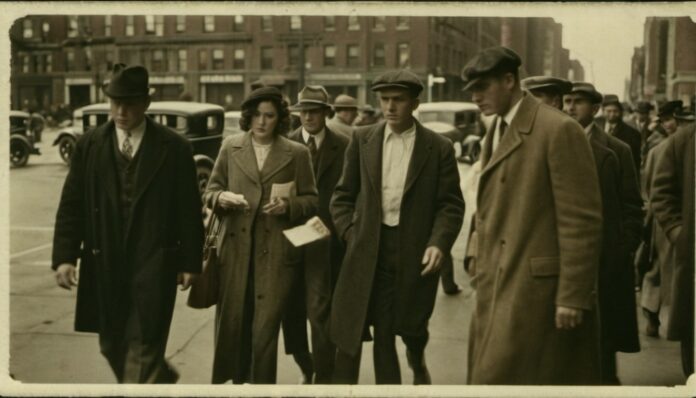The Great Depression was a severe worldwide economic crisis that lasted from 1929 to the late 1930s. It started in the United States after the stock market crash on October 29, 1929, known as Black Tuesday. During this time, millions of people lost their jobs, banks failed, and many businesses closed.
People struggled to afford basic necessities, and many families lost their homes. The Great Depression had a profound impact on society and led to significant changes in government policies to help prevent future economic disasters.
Interesting Facts about the Great Depression:
- The Great Depression began with the stock market crash on October 29, 1929, known as Black Tuesday.
- It was the longest and most severe economic downturn in modern history.
- Unemployment in the United States rose to 25% at its peak.
- Thousands of banks failed during the Great Depression, leading to the loss of savings for many people.
- The Dust Bowl, a severe drought, worsened the economic situation for farmers in the Midwest.
- Soup kitchens and bread lines became common as people struggled to find food.
- President Herbert Hoover was in office when the Great Depression began.
- Franklin D. Roosevelt was elected president in 1932 and introduced the New Deal to help the economy recover.
- The New Deal included programs like Social Security, the CCC, and the WPA to provide jobs and support.
- The Great Depression affected countries worldwide, not just the United States.
- Many families were forced to live in makeshift shantytowns called “Hoovervilles.”
- The Smoot-Hawley Tariff Act of 1930 raised tariffs and worsened international trade.
- The stock market took nearly 25 years to recover to its pre-Depression level.
- The Federal Deposit Insurance Corporation (FDIC) was created in 1933 to protect bank deposits.
- The Securities and Exchange Commission (SEC) was established to regulate the stock market.
- The Civilian Conservation Corps (CCC) employed young men in environmental projects.
- The Works Progress Administration (WPA) created millions of jobs through public works projects.
- The Social Security Act of 1935 introduced unemployment insurance and pensions for the elderly.
- The Tennessee Valley Authority (TVA) was created to provide jobs and electricity in the Tennessee Valley.
- Many people migrated from rural areas to cities in search of work.
- The Great Depression led to significant changes in economic policy and government regulation.
- Cultural works like John Steinbeck’s “The Grapes of Wrath” depicted the hardships of the time.
- The Gold Standard was abandoned in the U.S. to allow for more flexible monetary policy.
- Bank runs, where people rushed to withdraw their money, were common during the early 1930s.
- Many schools closed or shortened their academic years due to lack of funding.
- Women often took on new roles in the workforce as men lost their jobs.
- The New Deal coalition helped shape American politics for decades.
- The Depression ended with the economic boom brought about by World War II.
- The Great Depression significantly impacted the global economy and led to changes in international policies.
- Lessons from the Great Depression influenced modern economic practices and policies aimed at preventing similar crises.
